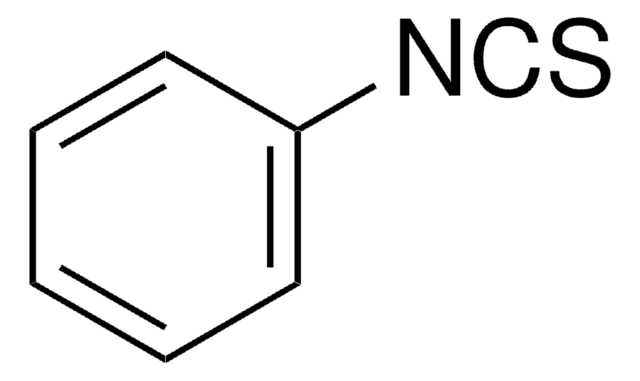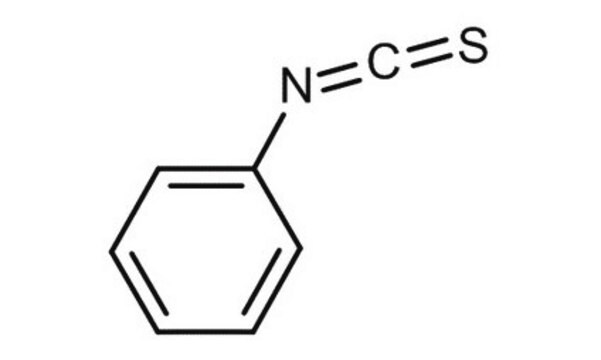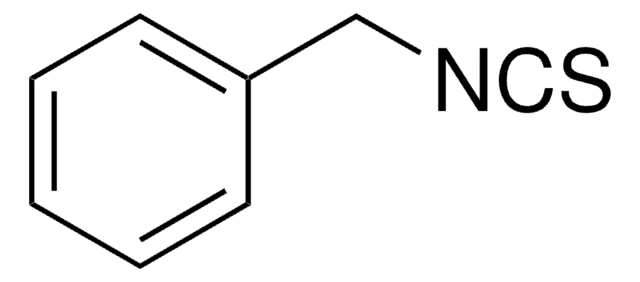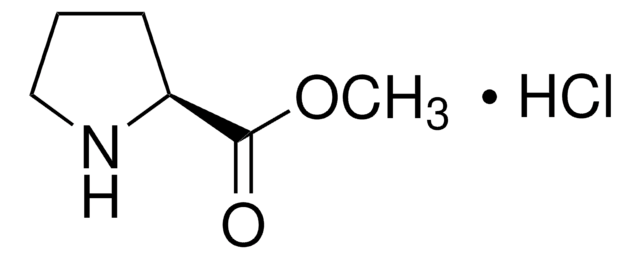P1034
Phenyl isothiocyanate
Sigma Grade, 8.36 M, suitable for solid phase protein sequencing analysis, ≥99% (GC), liquid
Sinónimos:
PITC
About This Item
Productos recomendados
grade
Sigma Grade
Quality Level
assay
≥99% (GC)
form
liquid
concentration
8.36 M
refractive index
n20/D 1.6515 (lit.)
bp
218 °C (lit.)
mp
−21 °C (lit.)
density
1.132 g/mL at 20 °C (lit.)
suitability
suitable for solid phase protein sequencing analysis
storage temp.
2-8°C
SMILES string
S=C=Nc1ccccc1
InChI
1S/C7H5NS/c9-6-8-7-4-2-1-3-5-7/h1-5H
InChI key
QKFJKGMPGYROCL-UHFFFAOYSA-N
¿Está buscando productos similares? Visita Guía de comparación de productos
General description
Application
Packaging
Ten mL size packaged in screw cap amber vials under argon.
signalword
Danger
hcodes
Hazard Classifications
Acute Tox. 3 Oral - Resp. Sens. 1 - Skin Corr. 1B - Skin Sens. 1
Storage Class
6.1A - Combustible acute toxic Cat. 1 and 2 / very toxic hazardous materials
wgk_germany
WGK 3
flash_point_f
190.4 °F - closed cup
flash_point_c
88 °C - closed cup
ppe
Faceshields, Gloves, Goggles, type ABEK (EN14387) respirator filter
Elija entre una de las versiones más recientes:
¿Ya tiene este producto?
Encuentre la documentación para los productos que ha comprado recientemente en la Biblioteca de documentos.
Los clientes también vieron
Nuestro equipo de científicos tiene experiencia en todas las áreas de investigación: Ciencias de la vida, Ciencia de los materiales, Síntesis química, Cromatografía, Analítica y muchas otras.
Póngase en contacto con el Servicio técnico











